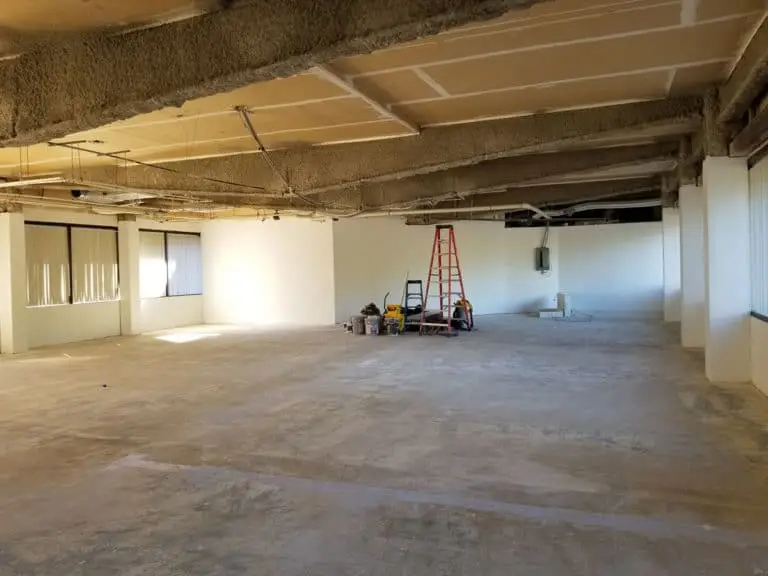When a tenant leases a new space, it’s likely they’ll request some changes to the space to suit their specific needs. They may have requested a tenant improvement allowance be included in the lease agreement, which would be the landlord’s job to provide.
Similarly, a tenant improvement allowance can be used as a way for commercial landlord’s to generate interest in their property. A tenant improvement allowance might seem like an extra cost, but it can sometimes be a great help for both sides. This article covers what a tenant improvement allowance is and what it covers.
What is a Tenant Improvement Allowance?
Simply put, a tenant improvement allowance (TI allowance) is an amount of money set aside by a commercial landlord to pay for changes to the property. It’s used for making alterations when a new tenant takes on a lease for a property, such as offices or retail space.
A TI allowance could cover major structural changes or simply redecorating. What amount it includes and what exactly it covers will be negotiated as part of the lease agreement. Generally speaking, the amount and scope of a TI allowance will correspond to the length of the lease.
The usual measure for a TI allowance is dollars per square foot of space. For example, you might decide on a $50,000 TI allowance at a rate of $50 per square foot. There isn’t a set amount that should be charged per square foot, and this is the figure that’ll be negotiated.
TI allowances don’t have to be paid back, which is why they can be such an incentive for businesses. If a landlord has the ability to offer a generous TI allowance then they’ll be much more likely to bring in new tenants.
What does it cover?
A TI allowance won’t cover all the costs associated with a new build-out. This is a common misunderstanding for tenants, but it isn’t designed to cover everything. Again, what the TI allowance will cover is negotiated as part of the lease agreement.
That said, commercial landlords are usually more interested in hard improvements like structural changes that will add lasting value to the space. These might include:
- HVAC
- Plumbing and electrics
- Doors and windows
- Walls
- Paint and flooring
Hard improvements like these are usually accepted by landlords as a given during the build-out process. However, tenants should always still confirm this in writing before signing the lease.
Typically a TI allowance won’t be spent on soft improvements to the space or miscellaneous extras. A landlord is looking to add long-term value that’ll be appealing to the next tenant. Some of the soft improvements not covered by a TI allowance include:
- Data cabling
- Furniture
- Fixtures and equipment
- Electronics
- Moving costs
Again, this isn’t a hard and fast rule, and some landlords might be willing to negotiate on these points. After all, if they set a TI allowance and there’s some money left over, it can be reasonable to spend some of it on these expenses.
Who controls the TI allowance?
Who decides what the TI allowance is spent on will depend on the space. Factors can include size and age of the building. For example, a landlord with a small, older building will be more likely to have restrictions on what can be done. Tenants of a newer property, however, might be open to a bit more freedom.
Similarly, a landlord might already have a contractor on hand to do the work for them. This is often referred to as a turnkey build-out, and does come with some advantages. For example, a tenant can state the work they need done without having to worry about organizing it themselves.
Negotiating the TI allowance
Getting the TI allowance right is important for both parties. The landlord doesn’t want to spend too much money, but the tenant wants to be able to afford the things they need.
Proper budgeting is important for tenants, and they should ideally come to negotiations with a rough idea of the build-out cost. It’s likely landlords will already have a figure too, so it’s useful for negotiations to come prepared. Similarly, don’t overlook details, as these can really ramp up costs.
Conclusion
Tenant Improvement Allowance: What Is It and What Does It Cover? Organizing a tenant improvement allowance is an important part of the leasing process. It can be a useful incentive for bringing clients in while also adding long-term value to the space. However, it’s also important to ensure the tenant improvement allowance works well for both parties.
If you’re looking for a Tenant Improvement General Contractor in San Diego, AH Construction is your number one choice. We have years of experience in Commercial Construction and Tenant Improvement in all San Diego, CA County. We know exactly what it’ll take to get your project done, so contact us today.




